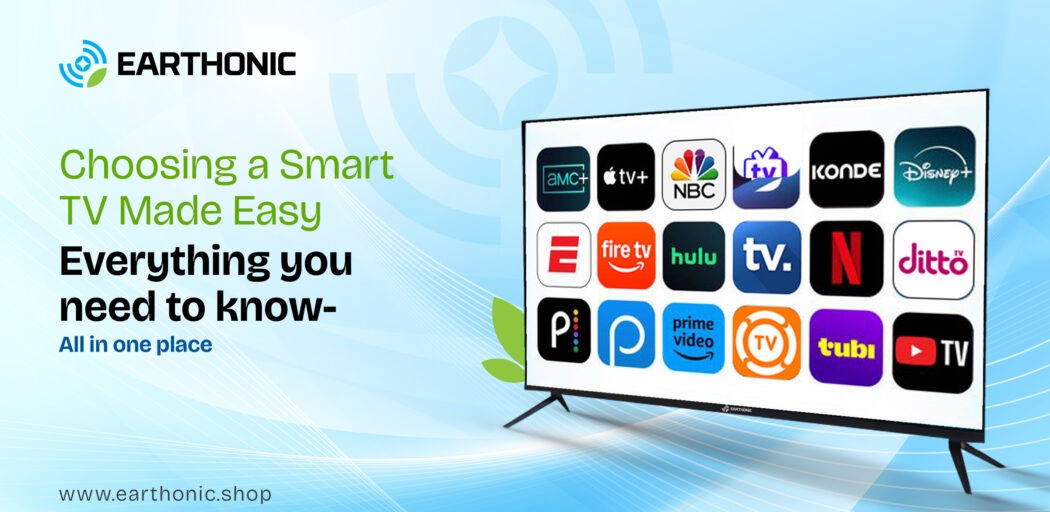Thinking of turning your living room into a home theatre? Picking the right smart TV today isn’t as easy as grabbing the biggest screen at the lowest price. The game has changed.
Modern smart TVs do far more than just stream channels; they offer built-in apps, voice control, ultra-HD resolutions, and features you didn’t even know you needed. But with so many brands, sizes, and tech specs flooding the market, how do you choose the one that’s actually right for your home?
In this ultimate guide, we’ll walk you through everything you need to know – from screen size and display types to smart features and connectivity, so you can make a confident, well-informed choice.
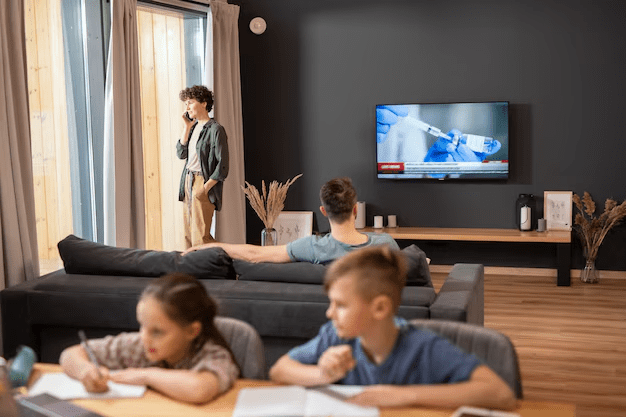
7 Factors To Know Before Investing In The Best Smart TV
1. Set Your Budget
Before diving into screen sizes and high-end features, start with the basics, then decide how much you’re willing to spend. Smart TVs in India come in a wide range of prices, from budget-friendly models to premium picks with advanced tech.
Having a clear budget not only helps you narrow your options but also keeps you from overspending on features you may never actually use.
Here’s a quick breakdown of smart TV price ranges in India and what you can typically expect at each level:
| Price Range | Expectations |
| ₹12,000 – ₹25,000 | Entry-level smart TVs (32″ to 43″), HD or Full HD resolution, basic smart platforms |
| ₹21,000 – ₹45,000 | Mid-range TVs (43″ to 55″), mostly 4K UHD, with better display and smart features |
| ₹40,000 – ₹80,000 | High-end models (50″ to 65″), QLED or advanced 4K, HDR support, faster processors |
| ₹80,000 and above | Premium TVs (65″+), OLED/QLED, Dolby Vision/Atmos, gaming features, slim design |
When choosing the best smart TV for your home, it’s equally important to consider how you plan to use it. Here’s a quick breakdown.
| Your Usage Style | Recommended Budget |
| For occasional watching in the bedroom | ₹12,000 – ₹20,000 |
| For daily streaming and family entertainment | ₹25,000 – ₹45,000 |
| For a movie buff or binge-watcher | ₹45,000 – ₹80,000 |
| For gaming or a home theatre setup | ₹80,000+ |
2. Pick The Right Size For Your Space
Choosing the right TV size isn’t just about picking the biggest screen you can afford. It’s all about finding a TV that fits your room comfortably and gives you the best viewing experience.

A screen that is too large can be overwhelming in a small space, while a screen that’s too small might feel underwhelming in a big living room. Hence, use this as a quick guide.
| Viewing Distance | Recommended TV Size |
| 4-6 feet | 32-43 inches |
| 6-8 feet | 43-55 inches |
| 8-10 feet | 55-65 inches |
| 10-12 feet or more | 65-85 inches or above |
In addition to viewing distance, it’s just as important to choose a TV size that complements your room type and layout.
- For bedrooms, a 32 to 43-inch Smart TV is usually ideal. It fits well on a dresser or wall mount and is perfect for shorter viewing distances.
- For living rooms or main halls, a 50–75 inch Smart TV offers a more immersive experience, great for movies, sports, and binge-watching, especially when paired with a spacious seating arrangement.
- For a home theatre setup, go big. A 75-inch TV or larger is the way to go. You can even explore projectors for that true cinematic experience.
3. Understand Display Types: LED, QLED, or OLED?
Let’s be honest, TV tech jargon can be intimidating. LED, QLED, OLED… they all sound like variations of the same thing. But trust us, they’re not. These display types can make a world of difference in how your shows, movies, and games look and feel. So, let’s decode them in plain English.
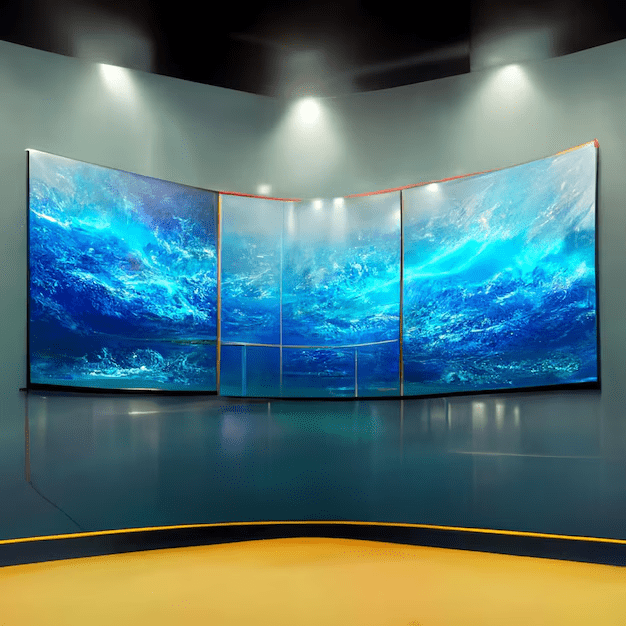
LED (Light Emitting Diode)
LED TVs are the most common and usually the most budget-friendly option out there. Technically, they’re LCD TVs with LED backlighting. What does that mean for you? Bright screens, decent colour accuracy, and a wide range of sizes. They perform well in well-lit rooms and are a solid pick for everyday use without breaking the bank.
QLED (Quantum Dot LED)
QLED is like LED’s cooler, more vibrant cousin. Developed by Samsung, QLED TVs use quantum dots to boost brightness and colour accuracy, making everything look punchier and more lifelike. Though they still rely on a backlight, QLEDs reduce the chances of screen burn-in and are great for bright rooms and long viewing hours.
OLED (Organic Light Emitting Diode)
Now we’re talking top-tier. OLEDs don’t need a backlight; each pixel lights up (or turns off) on its own, giving you inky blacks, stunning contrast, and truly cinematic visuals. If you’re serious about movies, gaming, or simply want the best viewing experience possible, OLED is your go-to. Just be prepared to pay a bit more for that visual magic.
4. Don’t Underestimate the Resolution
You could buy the biggest, fanciest TV in the store – but if the resolution doesn’t match, your viewing experience might fall flat. Resolution refers to how many pixels make up the screen, and more pixels mean a sharper, clearer image.
The higher the number of pixels, the clearer and more defined the image appears. Today, most new TVs offer at least Full HD (1080p) resolution, but if you’re buying a smart TV in 2025, 4K (Ultra HD) should be your go-to choice. Nevertheless, let’s discuss each resolution in detail so that you can choose as per your preference.
(I) HD Ready:
HD Ready is the most basic level of resolution for TVs, displaying content at 1280×720 pixels. While this resolution is suitable for smaller screens (like those 32 inches or less) or for casual use in children’s rooms, the image may appear blurry or pixelated on larger displays.
If you’re mostly watching cable TV or simple YouTube videos, an HD Ready TV can get the job done. However, it’s not ideal for modern streaming, gaming, or high-definition movies.
(II) Full HD (1080p):
Full HD (1080p) TVs offer a resolution of 1920 x 1080 pixels and were the standard for many years. They still work well for smaller screen sizes or secondary TVs in bedrooms. However, as screen sizes have grown and content quality has improved, 1080p is starting to feel outdated, especially for movie nights or gaming.
(III) 4K Ultra HD
4K resolution delivers 3840 x 2160 pixels—that’s four times the detail of Full HD. The result? Sharper, crisper images that truly shine on screens 50 inches and above.
What makes 4K even more appealing is content availability. Streaming platforms like Netflix, Amazon Prime Video, Disney+, and YouTube now offer a growing library of shows and movies in native 4K, making it a smart, future-ready choice.
Plus, most modern 4K TVs come with upscaling technology, which means even your older HD content gets a visual upgrade—fewer blurry visuals and more consistent quality across everything you watch.
5. Choose a Good Smart TV Platform
A Smart TV is only as smart as the platform it runs on. The operating system (OS) controls how you navigate apps, connect to devices, search for content, and interact with your TV. Let’s have a look at the most popular smart TV platforms and what they offer.
(I) Android TV/Google TV
Android TV and its newer version, Google TV, are some of the most feature-rich platforms available today. Powered by Google, it gives users access to the Google Play Store, which means you can download a number of famous apps, including Netflix, YouTube, Prime Video, Disney+, and more.
It also supports Google Assistant voice control, which makes it easy to search for shows, check the weather, or control smart home devices.
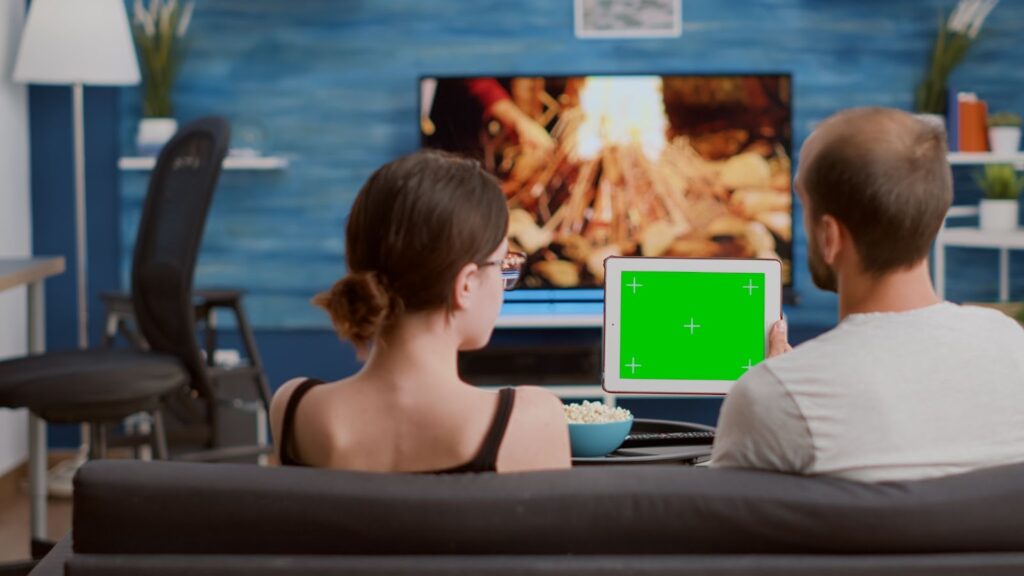
(II) Roku TV
Roku TV is known for its simplicity and ease of use, which makes it a favourite for users who want a no-fuss, intuitive interface. The home screen is clean and highly customisable, letting you pin your favourite apps and inputs for quick access. It also supports all major streaming apps and offers free content through The Roku Channel.
(III) Samsung Tizen OS
Samsung’s Tizen OS is smooth, fast, and loaded with features tailored to modern smart homes. It comes pre-installed on all Samsung smart TVs and supports a wide range of apps, including Netflix, Apple TV, YouTube, and Samsung TV Plus — a free live TV service with hundreds of channels.
Voice control is available via Bixby, but many models also work with Alexa and Google Assistant.
(IV) LG webOS
webOS is LG’s proprietary platform and is often known for its smooth, colourful interface and easy navigation. It uses a launcher bar that pops up from the bottom of the screen, giving you quick access to apps, inputs, and settings without interrupting what you’re watching.
Like other platforms, webOS supports all major streaming services and offers unique features, such as multi-view, which allows users to split the screen and watch two programs simultaneously.
6. Look for Key Features That Matter to You
Not all smart TVs are built the same, and the one that’s right for your neighbour might not be the best for you. Here are the most important features to consider, broken down by usage type:

(I) High Dynamic Range (HDR) – For Better Picture Quality
HDR helps your TV display brighter whites, darker blacks, and a wider range of colours. This means more lifelike images, especially in action scenes or nature documentaries.
Common HDR Formats:
- HDR10 – Basic but widely supported
- HDR10+ – An enhanced version with better contrast (used by Samsung)
- Dolby Vision – Top-tier HDR format (used by Netflix and many LG/Sony TVs)
Example: If you’re watching “Stranger Things” in Dolby Vision on a compatible TV, it’ll look noticeably richer and more cinematic.
(II) Refresh Rate – For Smooth Motion
The refresh rate, measured in hertz, tells you how often the image updates per second. A 60Hz TV is fine for casual watching, but if you love sports or gaming, go for 120 Hz or more. For example, if you watch a football match on a 120Hz screen, it means you’ll see every pass and goal with less blur.
(III) Screen Mirroring and Casting
If you want to play videos or show photos from your phone, make sure to look for TVs that support Chromecast built-in (for Android users), Apple AirPlay 2 (for iPhone and Mac users), and screen mirroring options in the TV’s settings.
(IV) Hands-Free Voice Control
Modern smart TVs are compatible with voice assistants like Google Assistant, Alexa, and Siri, making remote controls almost optional. With simple voice commands like “Play Breaking Bad on Netflix,” “What’s the weather?” or “Turn off the TV in 30 minutes,” you can search, control playback, adjust settings, or even manage smart home devices—all without lifting a finger.
(V) Ports and Connectivity
Also, make sure the TV has enough ports for your needs. These include:
- HDMI (at least 3 ports) – For consoles, soundbars, streaming devices
- USB ports – For flash drives or external hard drives
- Ethernet port – For faster, stable internet (if your Wi-Fi is weak)
- Bluetooth – To connect wireless headphones or speakers
Tip: HDMI 2.1 is the latest standard — look for at least one HDMI 2.1 port if you’re a gamer or plan to keep the TV for several years.
(VI) Design and Mounting Options
If you want your living room to look clean and modern, choose a smart TV with slim bezels, wall-mount compatibility (to save space), and cable management features to help hide messy wires.
7. Don’t Forget The Sound
When choosing the best smart TV, many people focus primarily on screen size, resolution, and available apps, often neglecting the importance of audio quality. A top-notch 4K OLED TV can feel underwhelming if the sound quality is flat, weak, or unclear.
Since most modern TVs are ultra-thin, they often don’t have enough space to accommodate powerful speakers. Therefore, it’s essential to consider how you’ll experience the sound for your favourite movies, music, or games, in addition to the visual aspect. Therefore, look for the following features:
(I) Soundbars: A Simple and Powerful Upgrade
A soundbar is one of the easiest ways to instantly improve your TV’s audio. It’s a compact, sleek speaker that sits just below or in front of your TV and connects via HDMI ARC, optical, or Bluetooth.
Soundbars offer clearer dialogue, richer bass, and a more immersive soundstage than built-in speakers. Many models also come with wireless subwoofers to boost low-end performance.
(II) Dolby Atmos and DTS: X for Next-Level Immersion
If you’re looking for next-gen audio tech, look for TVs or audio systems that support Dolby Atmos or DTS: X. These formats go beyond traditional surround sound by adding height channels, so sound can move above and around you in 3D space. For example, helicopters might sound like they’re flying overhead, or rain might seem like it’s falling all around the room.
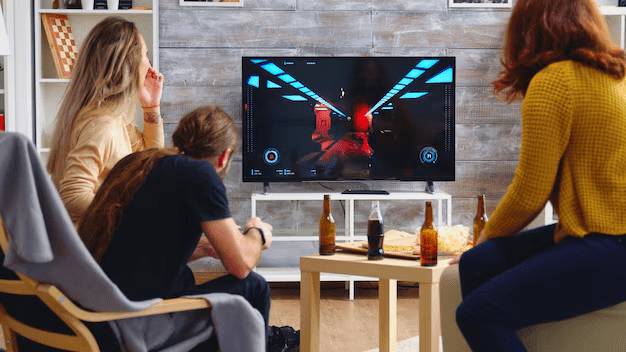
What Sets Earthonic Apart?
Whether you’re watching the latest blockbuster or streaming a nail-biting cricket final, Earthonics Smart TVs are built to bring every frame to life with breathtaking clarity and sound.
Top models like the Earthonic 50″ 4K UHD Smart LED TV or Earthonic 55″ 4K UHD Smart LED TV deliver stunning 4K Ultra HD resolution, immersive Dolby Audio, and rich, vibrant colour depth—giving you a cinematic experience right in your living room, without the hefty price tag.
These advanced smart TVs also provide instant access to your favourite apps like Netflix, Prime Video, and YouTube. Plus, with sleek ultra-slim bezels, they’re designed to elevate the style of any space. It’s smart, it’s stylish, and it’s made to fit perfectly into your life.
Ready to Upgrade Your Viewing Experience?
Choosing the right smart TV is simple when you know what matters. Think about your space, your needs, and your budget—then let Earthonic help you find the perfect match.

